The Ken Bausert Photo Collection



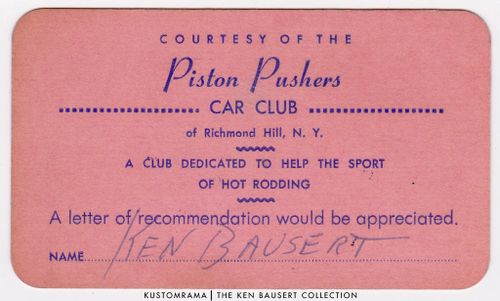
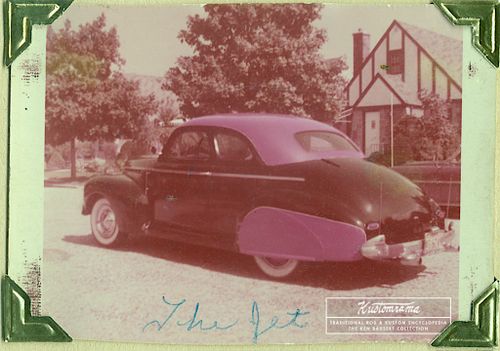










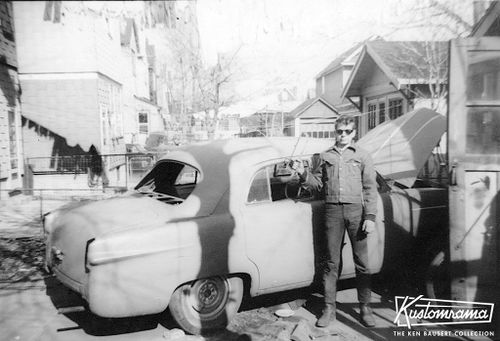








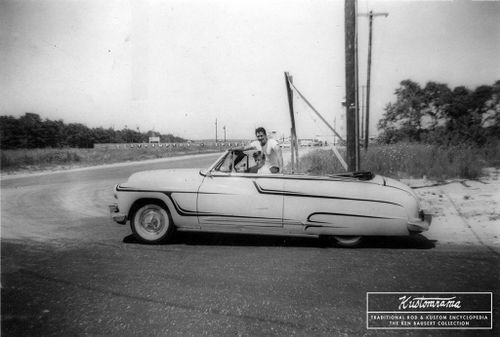
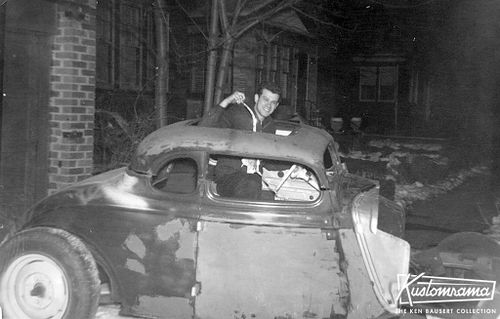




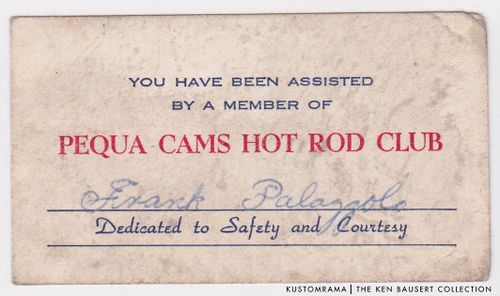

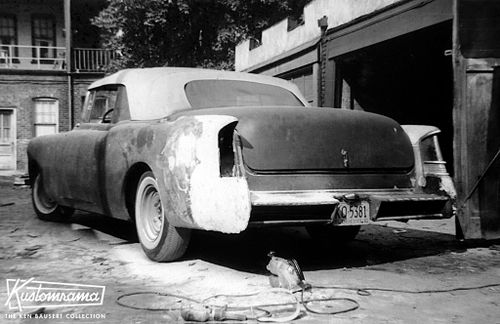

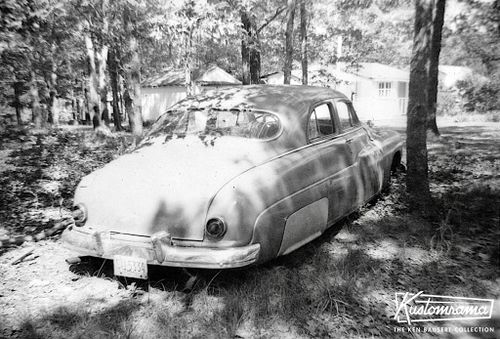





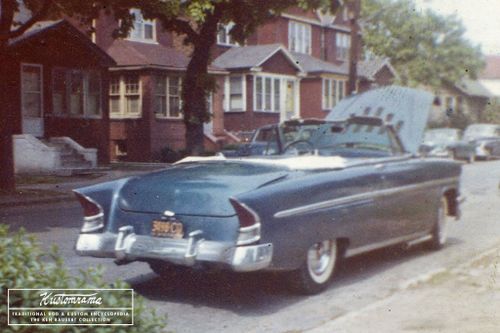
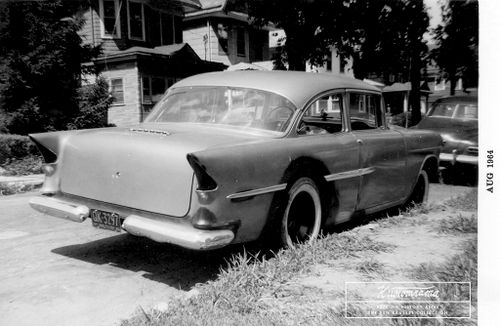
New York City is known as the city that never sleeps. A melting pot of people from all corners of the world. If you have ever seen the movie “The Lords of the Flatbush” with Sylvester Stallone and Henry “The Fonz” Winkler, I’m sure you have an opinion about how it was to grow up in New York City in the 1950s. Set in 1958, the Lords spent their days chasing girls, stealing cars, playing pool and hanging out at the local malt shop. Ken Bausert grew up in a two-story house in Richmond Hill, New York’s borough of Queens. A 25-minute drive on the Belt Parkway separates Richmond Hill from the Flatbush neighborhood in Brooklyn. Queens is the easternmost and largest in area of the five boroughs of New York City. It is geographically adjacent to the borough of Brooklyn at the southwestern end of Long Island and to Nassau County farther east on Long Island.[1]
Contents
Growing Up in Richmond Hill
Our first introduction to Ken was through a story named “Mint Julep” in Gasoline Magazine 3/2009. “Mint Julep” was Ken’s first car, a 1950 Mercury convertible that he customized while he was in high school. Ken’s ancestors emigrated from Germany in 1866. Ken was born in 1943, during WWII. Richmond Hill was a middle-class suburban area close to major transportation, shopping, and recreation sources. “My neighborhood was a mixture of people that came from other places. On my block, I had an Irish family next door to me. On the other side, I had another German family. Right around the corner was an Italian family. There was a little bit of everything,” Ken told Sondre Kvipt of Kustomrama in 2017. As a teenager, Ken grew an interest in automobiles. His mother was a housewife, and his father was an electrician. Ken's father wanted Ken to be an electrician as well, but Ken told him that he didn’t want to become an electrician, he wanted to be a mechanic. His dad told him that if that’s where his heart was, that’s what he had to do.[2]
Woody
Ken believes the first hot rods and custom cars in the area started popping up after the War, in the late 1940s. By the mid-1950s it had become quite a popular thing. “I became really interested in custom cars and hot rods by 1958, the year I bought my first Custom Cars magazine. Around that time, I started seeing a particular car that caught my attention as I walked down 129th Street, in my neighborhood of Richmond Hill. It was a '49 Mercury coupe, always parked in front of the same house. It was getting really radically customized. It was a sedan that had been built into a hardtop, and every time I saw it, it had new and different modifications done to it, but I never saw anyone working on it. One day, I finally lucked out and met the guy who was customizing the car: Paul Wood. Paul was only about 17 or 18 years old. He was in the Navy at the time but was dating a girl who lived in the nearby house with her parents. He only worked on the car while he was home on leave and, because I was still in high school, I kept missing him... until that day. When Woody got back, he would open the trunk of the car. In the trunk, he had acetylene and oxygen tanks. Woody would roll the hoses out and start working on the car in the street, in front of the house, since they had no driveway or garage. When he was done, he would pack all back into the trunk. Shut it, and go back to the Navy base.” Ken and Woody became close friends, and Woody helped Ken with some of the modifications on Ken’s Merc when he got out of the Navy.
First Car
Ken bought his first car, the 1950 Mercury convertible, in 1959. “It was only 125 dollars. Even though 125 dollars was a good amount of money back then, my mother had put money away for me as I was growing up.” Ken was 15 years old, he couldn’t drive, but he wanted to buy a car he could work on, so his mother told him he could use the money to buy the Merc. “I was fifteen-years-old and worked on it after school and on weekends. At 17 I got a junior license, but I could only drive with an adult in the car and my car wasn’t yet registered. When I was 18, my junior license became a full license. The first version of the car was completed shortly before I turned 18. I turned 18 at 12 o'clock midnight, on July 25, 1961, so two of my friends joined me at about 10 PM on the 24th, counting down the hours & minutes. I cheated and drove away at about 11:45 PM, visiting the several White Castle restaurants in Queens and Brooklyn, showing the car off to other guys that hung out there. We then crossed the Marine Parkway Bridge from mainland Brooklyn over to the Rockaway Peninsula. We drove by the amusement park area of Rockaway and then north on Cross Bay Boulevard, stopping at the Bow Wow, hot dog/hamburger place, and Pizza City. Both important places for guys with cars to hang out. We then stopped by New Park Pizza before heading home. I had been going there for the last year and a half with friends that were older than me. I used to hang out with guys that were older that already had cars and licenses.”[2]
The Piston Pushers
While in high school, before Ken and his buddies could drive, they formed a car club named the Piston Pushers. “We basically just got together and talked about cars. Sometimes we also helped each other out with the cars we were working on.” When Sondre asked Ken about how his teenage days were, compared to the Lords of the Flatbush movie, he told him that there were a lot of guys that formed car clubs. “It was very similar to Lords of Flatbush, just not as dramatic. Most of them were not gangs or anything like that. They just all got together and formed car clubs. There were probably at least six car clubs in Queens. We didn’t steal cars. Although I knew a couple of guys that would steal cars. I didn’t steal cars, but once in a while someone would steal a car, but it wasn’t that widespread, especially amongst the guys that were working on cars.” As far as Ken can remember, his buddies didn’t even steal hubcaps. He does remember that a couple of the guys he hung out with once stole a pair of fender skirts though, “they were older than me, and they were already driving before I was driving. One of the guys bought a 1959 Chevy. It was a black car, and he wanted to get fenderskirts for the rear. He couldn’t afford the fender skirts, so he and his friend went out one night to find black fender skirts on a 59 Chevy that they could steal. The only thing they could find was a red 59 Chevy with fender skirts. So they stole the 59 red fender skirts. He was gonna bring them home and paint them so he could put them on his Chevy. Before they got home, they suddenly came across a black 59 Chevy with fender skirts, so they took the black fender skirts off and installed the red fender skirts on the black car. The next day when that guy woke up he found his black 59 Chevy with red fender skirts on,” Ken laughs. Another time, some friends of Ken stole a turkey. “They went to a Diner after being out, hanging around all night. While they were at the Diner, the chef brought out a big turkey that he put on the counter for the next day. While my friends were sitting there, one of the guys got the idea to steal the turkey. The Diner had the main door on the front. There was also a side door that you could go out. While one guy was paying for whatever they had, the other guy went over, took the turkey and went out the side door. They all met at the parking lot, jumped into the car, and drove away. They got maybe half a mile away when they were stopped at a light. They did a u-turn. A cop car saw them and made a u-turn to follow them. They thought that they were gonna get busted for stealing the turkey, but the cops were busting them for the u-turn. They started to drive away with the turkey in the car, and one of the guys suggested they should get rid of the turkey, so the cops didn’t bust them with the turkey in their possession, so they threw it out the window of the car. When the cops finally caught up with them, they asked the cops what they were stopping them for. One of the cops told them about the u-turn. Not knowing about the turkey, they asked the kids about what they were throwing out the window of the car?” The whole story sounds like a scene from American Graffiti, and Ken could tell that life in Queens in the 1950s and the 1960s was actually more like American Graffiti than Lords of the Flatbush. "Except for the winters and snow! You had the tough guys, some gangs here and there, but mostly just guys with their cars trying to pick up girls. We used to go places. If you had a weekend coming up, you just hopped into the car and took off. We drove over to Jersey and spent the weekend there. Or Connecticut. Just driving all over the places. It was total freedom. After I came home from work, I would have dinner. Then take off in the car and just drive around. One of the things I used to do, late at night, if we had nothing better to do, was drive south on the Van Wyck Expressway into Idlewild Airport and cruise around there, sometimes parking to watch the jets take off and land. The airport had a perimeter road around the outskirts that actually crossed one of the runways! You could be driving along and, all of a sudden, have to stop at a red light while a big jet took off in front of you.”[2]
The Mint Julep
Ken believes there were more nice cars in California because of the weather. “12 months a year the kids in California could cruise around and fix their cars.” By the time Ken graduated high school, the first incarnation of “The Mint Julep” was completed. “I have mixed feelings about the car. The first version represented a very special time in my life since it was the culmination of my dream to build my own customized car. The second incarnation is different in the sense that it represents a more sophisticated yet radical approach.” Ken restyled the first version of "The Mint Julep” on his own. He did everything on the car himself. “I didn’t need to do much welding because I used fiberglass and bondo.” After he smashed the front end on it, Woody offered to help Ken do some welding on the car. “Woody did the scoops on the rear fender skirts out of round rods and sheet metal. He also did all the welding on the rear pan, while I finished it off. He was a real nice guy, and he didn’t even charge me for the work!”[2]
Street Racing
There were several popular areas for street racing in the Queens and Brooklyn area back in the 1950s and the 1960s. “One was Cross Bay Boulevard. Woodhaven Blvd runs North/South in Queens, from the Long Island Expressway to the Belt Parkway in the South. After the Belt Parkway, it becomes Cross Bay Blvd, and it runs through Howard Beach before crossing over a bridge known as the “first bridge.” Then it continues as a three-lane road, needed to handle beach traffic on hot summer weekends, through Jamaica Bay Wildlife Preserve, hence the name “Cross Bay,” and, because you were driving through an uninhabited area, there were no traffic lights or side roads intersecting it until you reached the town of Broad Channel, a sparsely-inhabited area, a couple miles further, and then the bridge taking you over to Rockaway Beach area, “second bridge.” Cross Bay Blvd. was ideal for drag racing because it was lightly traveled at night, there were no side roads or danger of other cars crossing in front of you, and once you drove down it to be sure there were no cops hanging out, you were pretty sure you wouldn’t get busted!”[2]
The 1320 Crusaders
“After I graduated high school, we formed another car club called the “1320 Crusaders.” It wasn’t a big club. We were just a bunch of friends that used to hang out. We had some plaques made, but we never had club jackets or anything like that. Most of the guys in the club drove mild customs.” Ken was known for having the hottest cars in the area. Especially the Merc. Nobody had a car like Ken’s Merc at the time. “A lot of the guys just drove around with primered cars. Then they got tired of it and sold it off so they could buy something else. Sometimes the new owner would complete the car, but most of the times, the cars were only halfway done. We were all working. We had a job. Then we had girlfriends, or got married, and didn’t have as much time as we wanted to spend on the cars. We got tired of it, and wanted something newer. In the beginning, the early Shoebox Fords were what we could afford. A lot of the times we also got the car for free, oreallyal cheap, because it was a relative’s car. Ken Szekretar, a friend of mine in Glendale got a 1949 Ford four-door for free. He didn’t want a 49 four-door Ford, but he got it for free. One of his aunts or uncle gave it to him. Back then nobody would be caught dead owning a four-door car. It had to be a two-door car. A coupe or convertible. Then you had to do a little something to it. At least nose and deck it. Then you had to do something to the engine, to make it a little bit faster. We were all trying to be fast and cool. Later on, when you had a job, you could afford a newer car, like the 1955 Chevy. Some of the guys that had good jobs, and were making good money, went on to buy Corvettes. They were still living at home and didn’t have rent to pay. They weren’t married yet and didn’t have a family to support. By 1961 a few of my friends had started to buy production cars. One bought a 1959 Chevy with a 348 engine and three carbs. That was the beginning of everyone looking at each other saying “That’s cheating! You can’t go out and buy a car like that. You’ve got to do it yourself.” When the first 409 engine came out, a friend of mine bought a brand new 1961 Chevy. We all saw him at the candy store when we were hanging out. We all looked at the car. We then looked at each other, and then we said “No. No! This is wrong. You can’t do that. You can’t buy a factory-made hot rod.” That was the beginning of everyone saying why get my hands dirty? I’ll just go out and buy a 409 or something. In spite of that, there were still a lot of guys that would build their own cars. From then on there were two types of crowds.”[2]
The S&S Speed Shop
Ken and his buddies used to hang out at S&S Speed Shop on Atlantic Avenue. Run by a fellow named John, the shop was located about 14 blocks from Ken’s home. Ken couldn’t afford to buy anything from the shop, “they were more expensive than anybody else, but all the guys that had cars that knew the guy or bought stuff from him used to come there. You would see cars parked in front of the place and around the side streets, and there were always cool cars around there. John was a nice guy, but he was expensive, so a lot of the time me and my friends would buy our stuff from JC Whitney, Moon or Honest Charlie mail-order ads in custom car magazines. You sent a check or money order, and there would be a big package coming for you in the mail. A lot of stuff was also bought and sold between guys that knew each other. I only hang out at the speed shop because it was a cool place to hang out. I couldn’t afford to buy anything from that guy.” John’s son Richard helped out at the counter. John had a 1949 Ford pickup truck with a supercharged Oldsmobile engine tucked under the hood. “It was really cool. That was one of my favorite vehicles.” The shop was still in business in 2017, run by Richard and his brothers.[2]
Westhampton Speedway
On the weekends, mostly on Sundays, anyone with a hot rod or custom car on Long Island in the 1950s and the 1960s could be found at a drag strip in Westhampton. Westhampton Speedway was a ¼ mile track where cars raced in classes outlined by the type and weight of the car, size of the engine, and extent of modifications overall. “Two cars at a time started from a standing stop and those with the lowest elapsed time won each “run.” By a process of elimination, one car in each class would emerge the final winner.”[2]
Family Life
In 1965 Ken got married and moved to Elmont. “I still worked a regular job in Forest Hills, Queens, and a part-time job in Richmond Hill. This had me back in the old neighborhood quite a bit, so I kept in touch with many old friends. By 1973, we had two children and moved further east. I got a job closer to home and gave up the part-time job in Queens. As a result, I didn't have the time to get back to the old neighborhood much and slowly drifted apart from many friends.” Luckily the memories and stories still remain, along with Ken's detailed scrapbook.
References
Did you enjoy this article?
Kustomrama is an encyclopedia dedicated to preserve, share and protect traditional hot rod and custom car history from all over the world.
- Help us keep history alive. For as little as 2.99 USD a month you can become a monthly supporter. Click here to learn more.
- Subscribe to our free newsletter and receive regular updates and stories from Kustomrama.
- Do you know someone who would enjoy this article? Click here to forward it.
Can you help us make this article better?
Please get in touch with us at mail@kustomrama.com if you have additional information or photos to share about The Ken Bausert Photo Collection.
This article was made possible by:
SunTec Auto Glass - Auto Glass Services on Vintage and Classic Cars
Finding a replacement windshield, back or side glass can be a difficult task when restoring your vintage or custom classic car. It doesn't have to be though now with auto glass specialist companies like www.suntecautoglass.com. They can source OEM or OEM-equivalent glass for older makes/models; which will ensure a proper fit every time. Check them out for more details!
Do you want to see your company here? Click here for more info about how you can advertise your business on Kustomrama.






